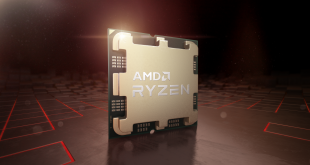While the whole world plus dog is still looking at the ripples made by the Sandy Bridge recall, Intel is jogging on at a tremendous rate of knots. KitGuru dons a bee-keeper suit and enters the FAB-u-lous world of CPU technology.
In January, everyone's jaw dropped as Intel asked the market to send Sandy Bridge back. Now the company is not only looking at record revenues for 2011, it is also, very much, looking ahead. Far ahead.
Forget the Ivy Bridge launch and whether or not Intel can get the special Nikon lenses from tsumani-hit Japan in time for an ‘early 2012 launch', the scientists at Intel are focused (pun intended) on something far more ambitious.

The year is 2016, it's heading toward autumn and the chip technology that everyone's waiting for is the ‘tick' shrink of Pelican Lake – the architectural successor to Haswell (or at least that's the code name that seems to be going around the interwibble). It will increase performance in a handful of benchmarks, but – overall – the most significant change is the way that it allows Intel to squeeze even more chips from a wafer. Again, this will add additional price pressure on AMD (who will be hoping that failure rates increase exponentially as Intel attempts to add new processes to the manufacture of its processors).
Technologically, Pelican Lake is streets ahead of Sandy Bridge, with levels of parallelism that present designs can only dream of. Intel's engineers will also need to have solved some serious leakage issues – and consider running large areas of the chip asynchronously, because it's almost too complicated to try and maintain a single clock for the whole processor.
We're presently moving into the area of stacked memory and, pretty soon, we could be looking at stacked CPUs – designs which are inherently 3D in more ways than one.
Right now, in 2011, we're all marvelling at how much power we can achieve from a Core i7 2600k processor, costing just over £200, and clocking to 4.8Ghz on air. For moves like Intel's 7nm process change, the present quad core 2600k processors will be made to look like today's Atoms. We're moving that fast every 5 years.

KitGuru says: From today's talk of a system on a chip, the Pelican Lake era of processor will, effectively, be a network on a chip. When the expected move to multi-dimensional designs happens, it will be interesting to see if the clock speeds all fall back again, as they did with the first of the Core processors. As in life, it's not really how fast you work – as much as how much work you do – that's really important. Despite what the chip-marketing people might want you to believe.
Comments below or in the KitGuru forum.
 KitGuru KitGuru.net – Tech News | Hardware News | Hardware Reviews | IOS | Mobile | Gaming | Graphics Cards
KitGuru KitGuru.net – Tech News | Hardware News | Hardware Reviews | IOS | Mobile | Gaming | Graphics Cards


